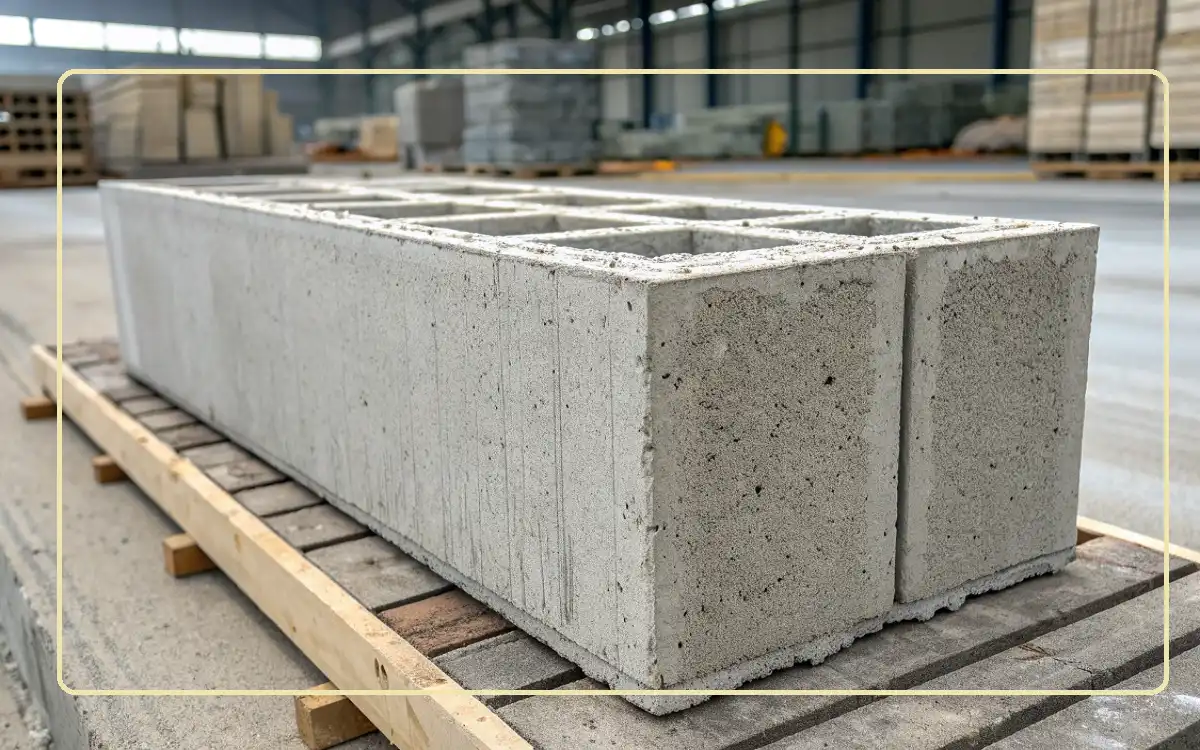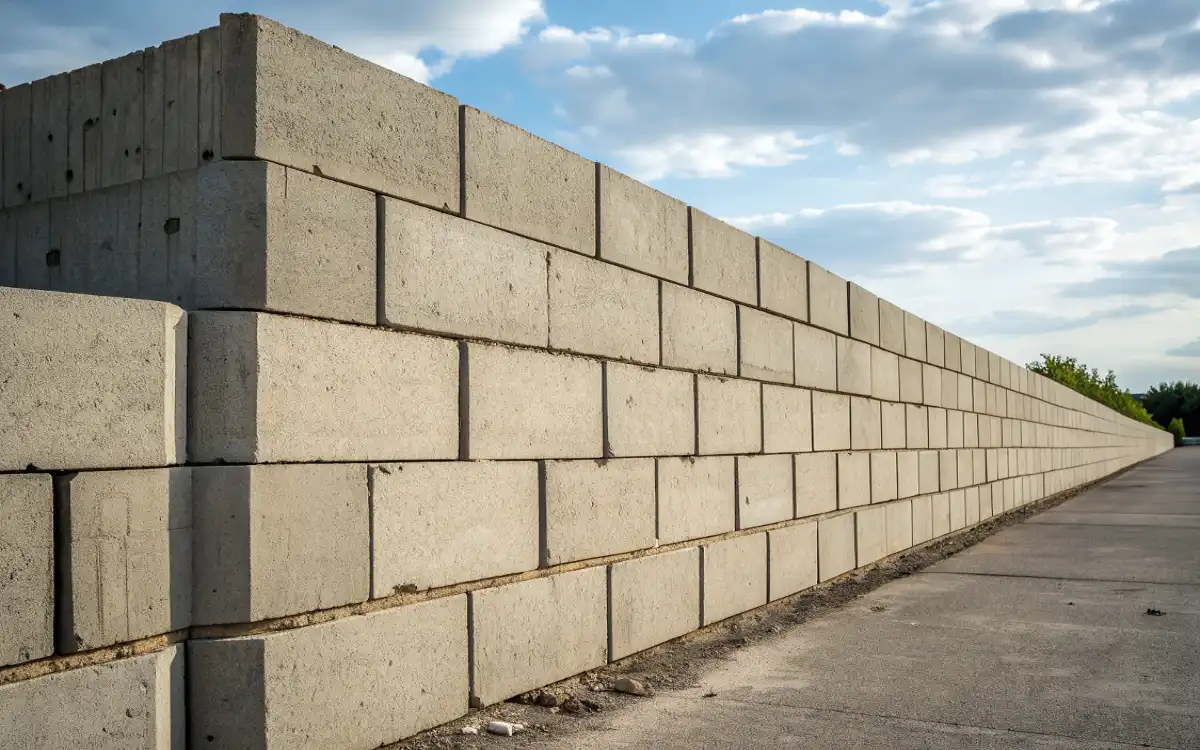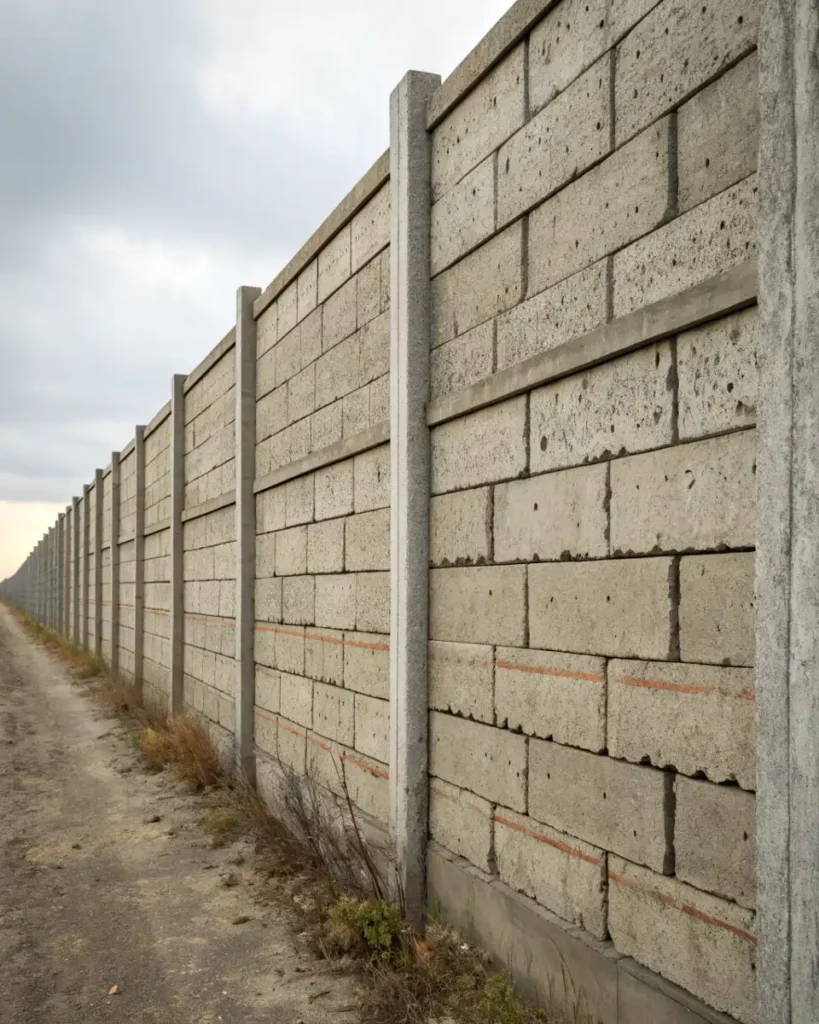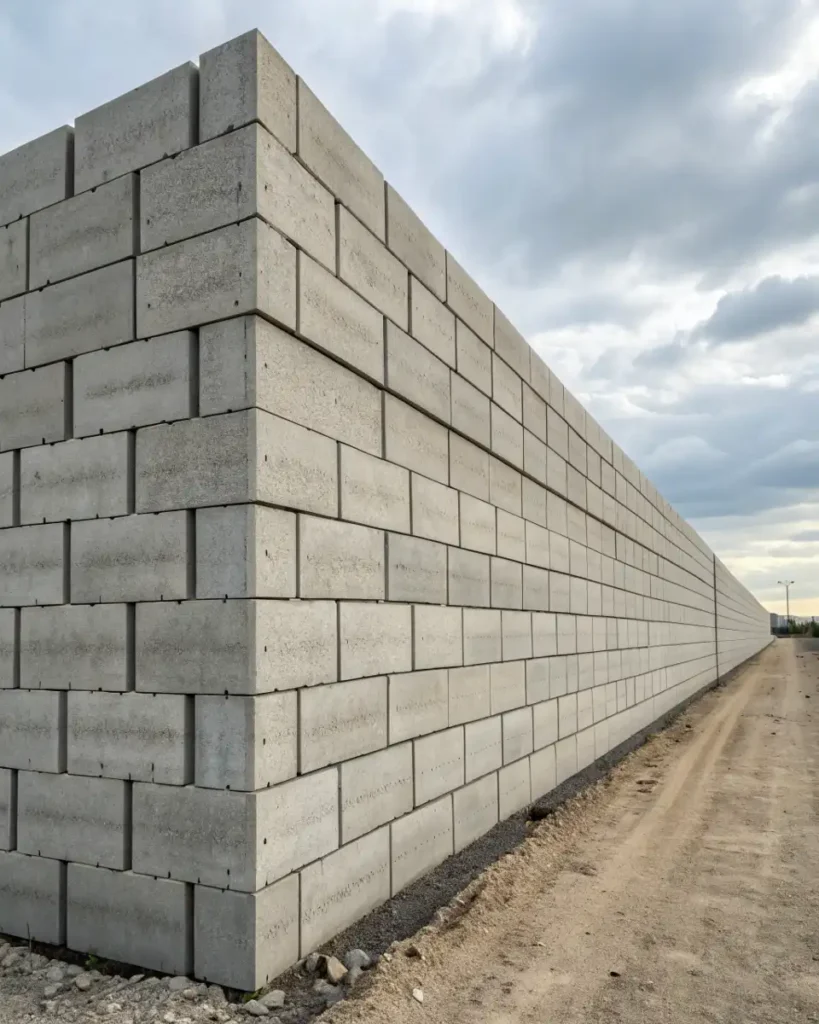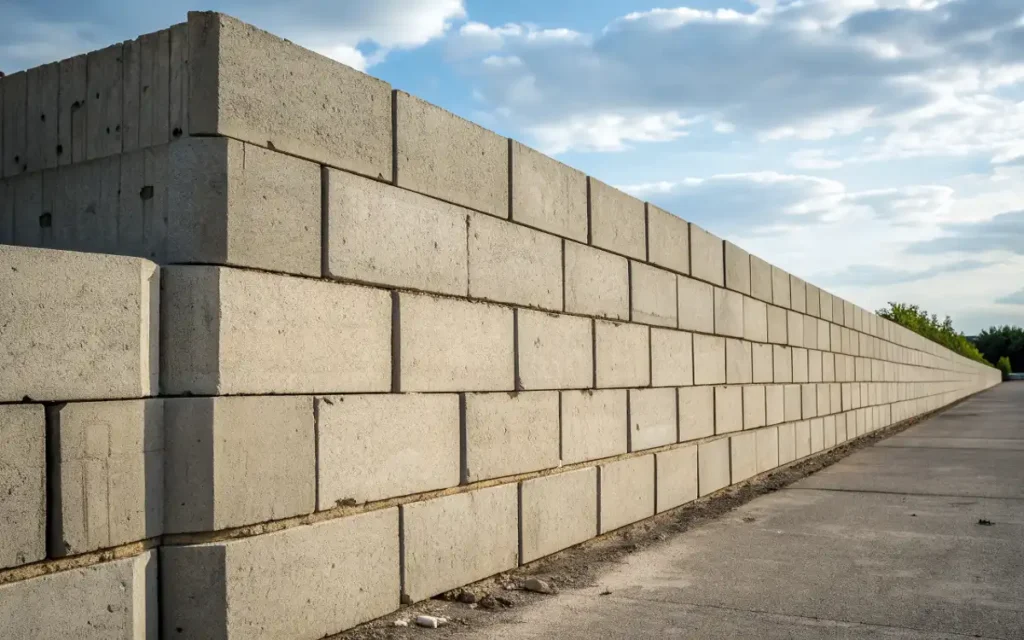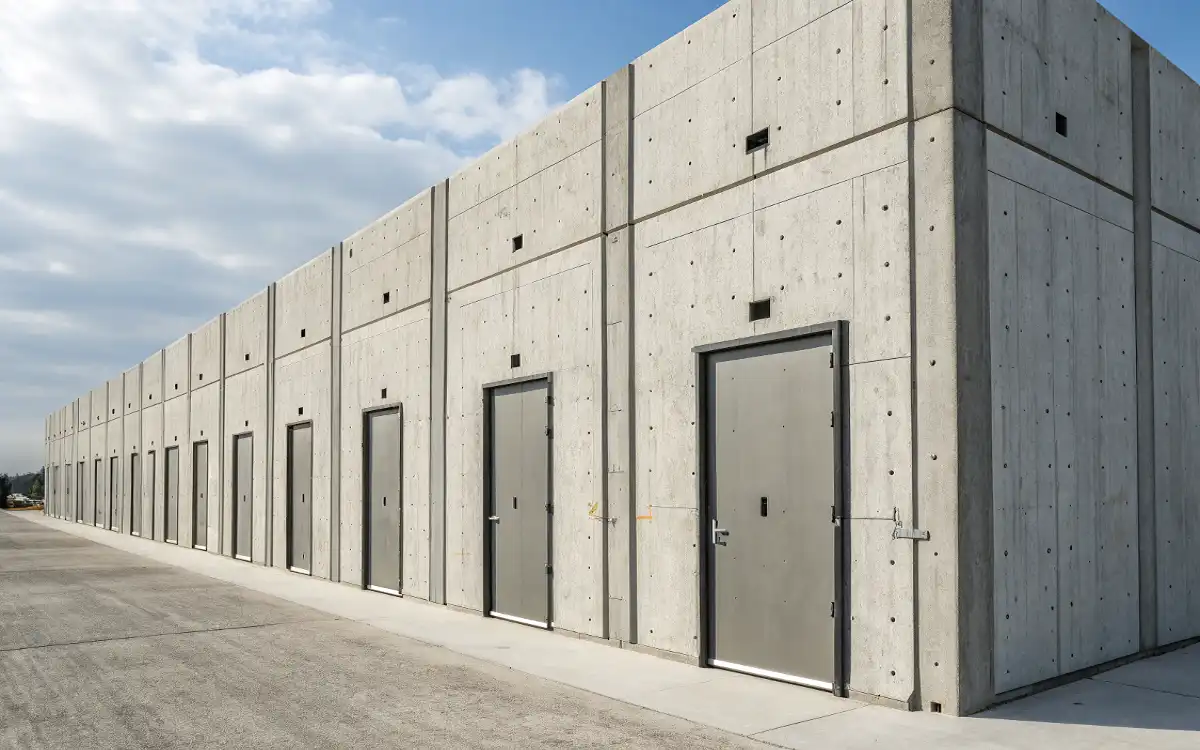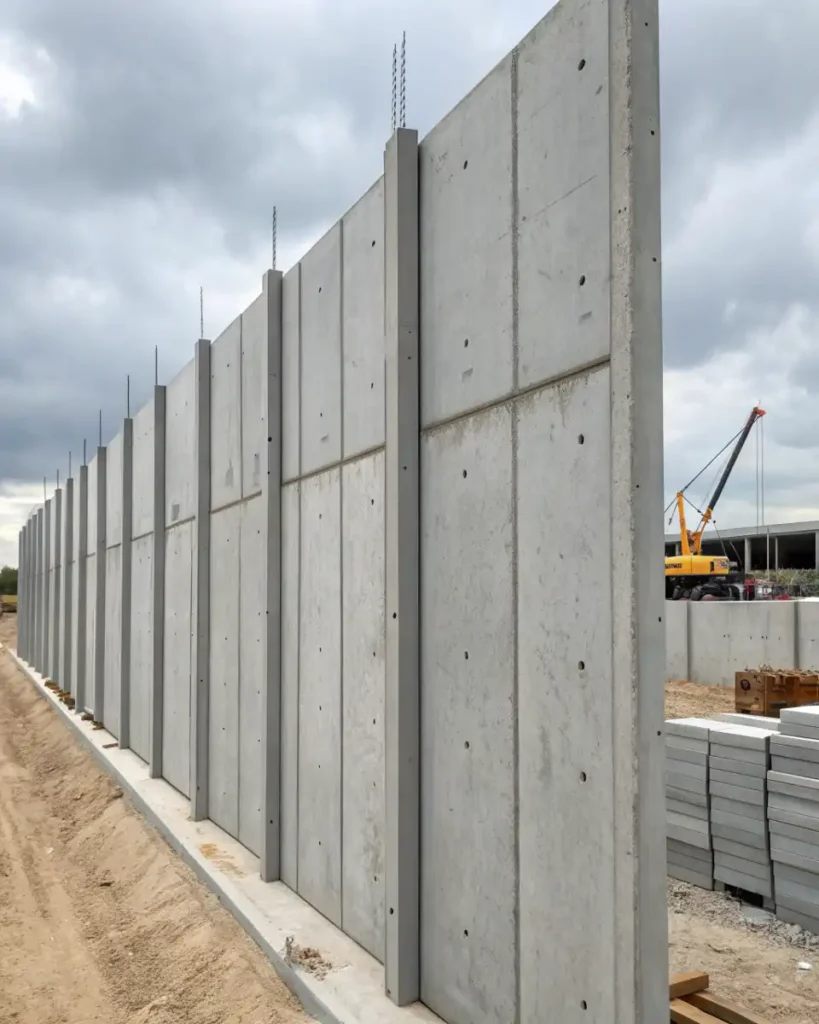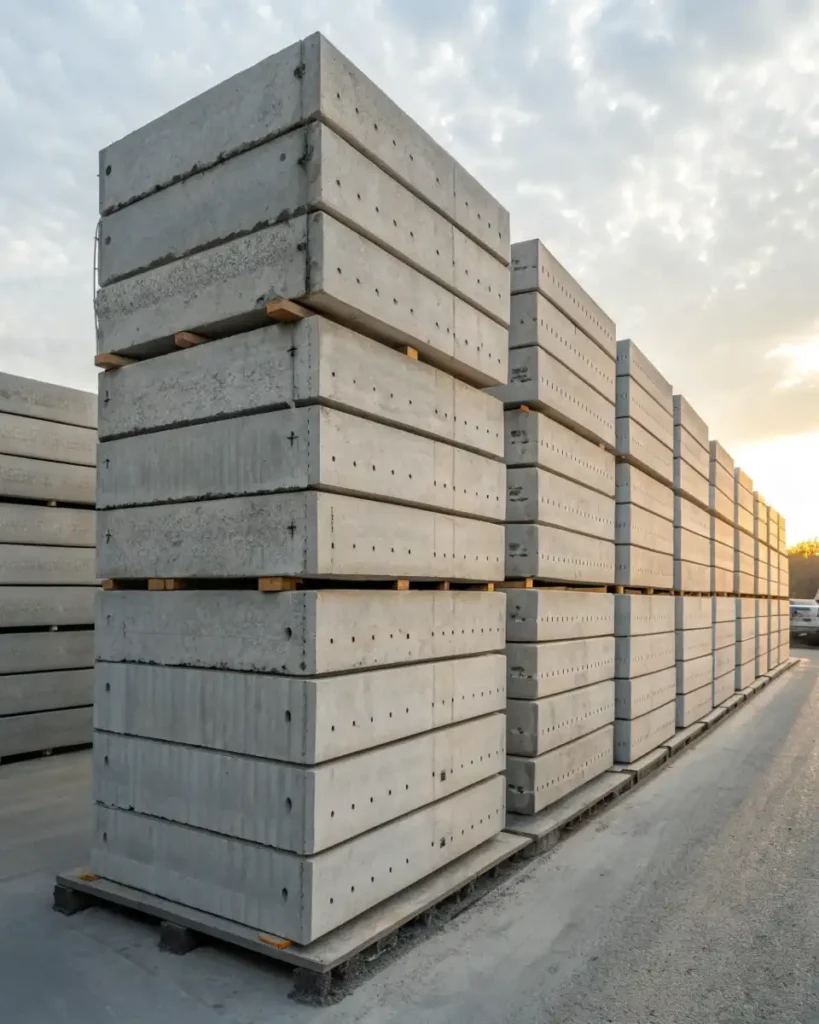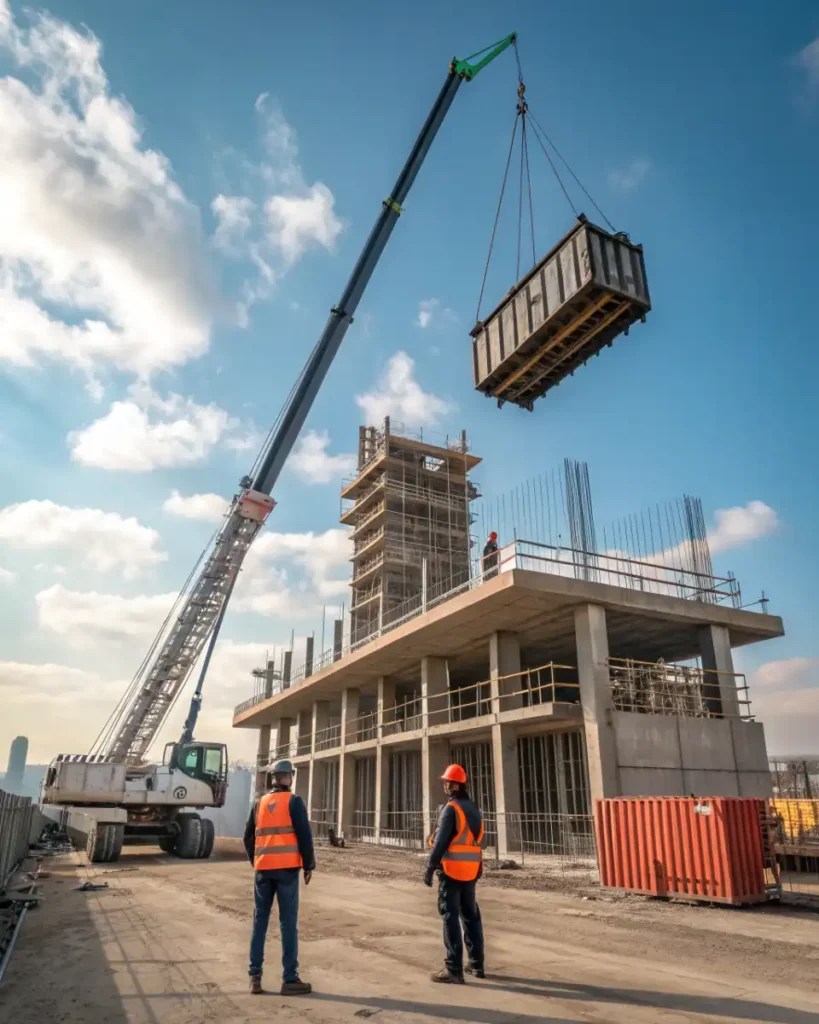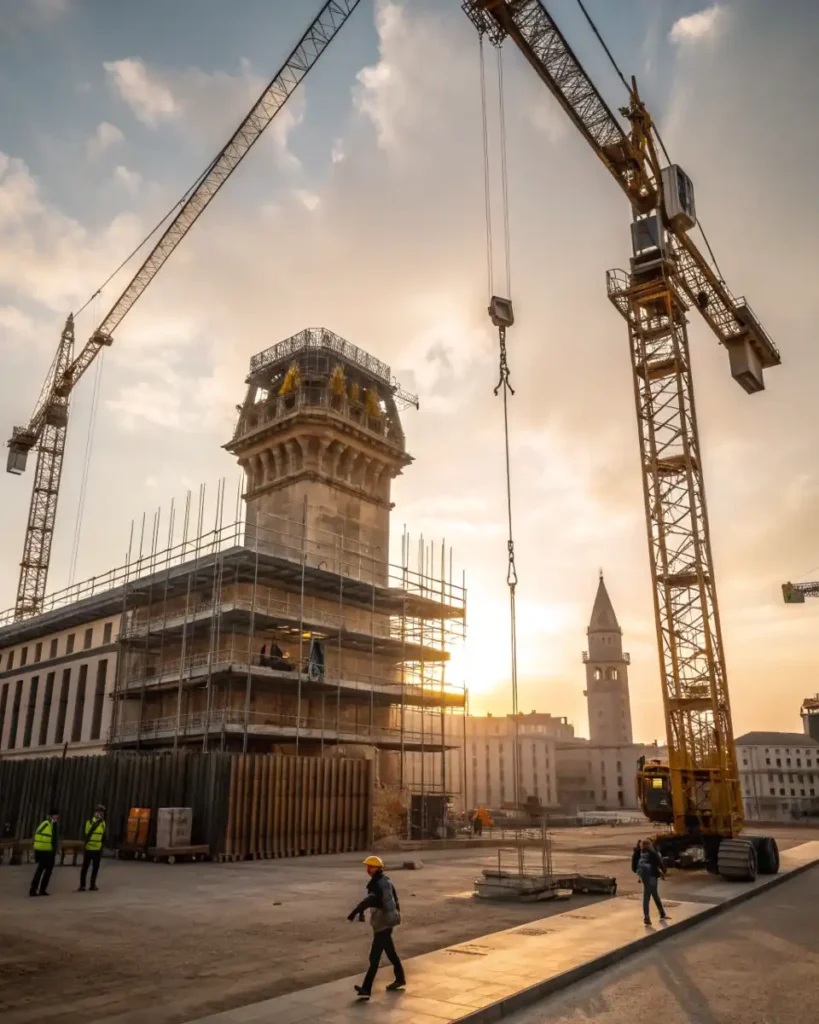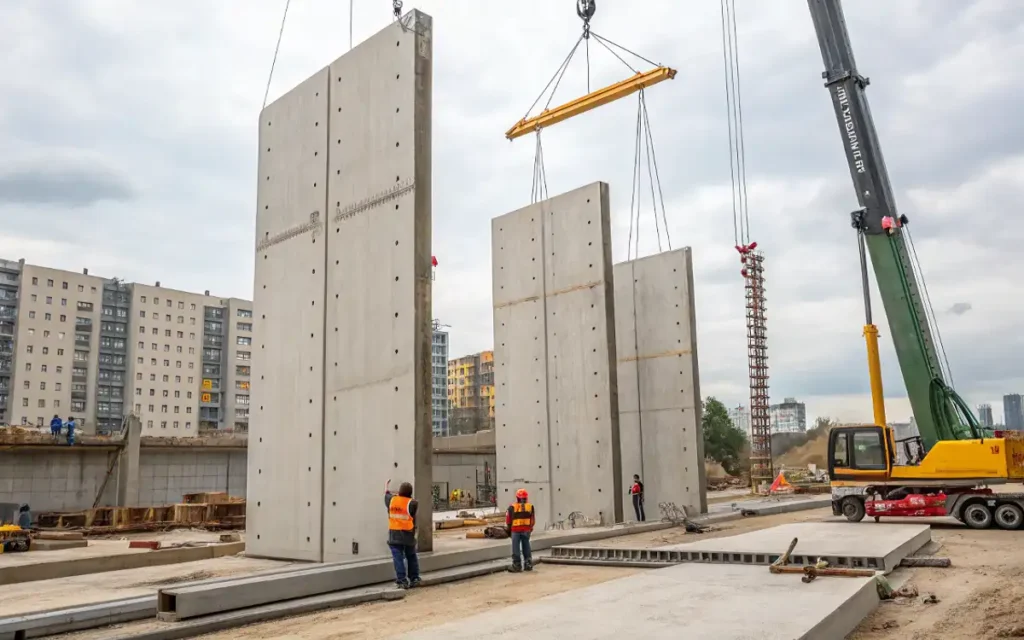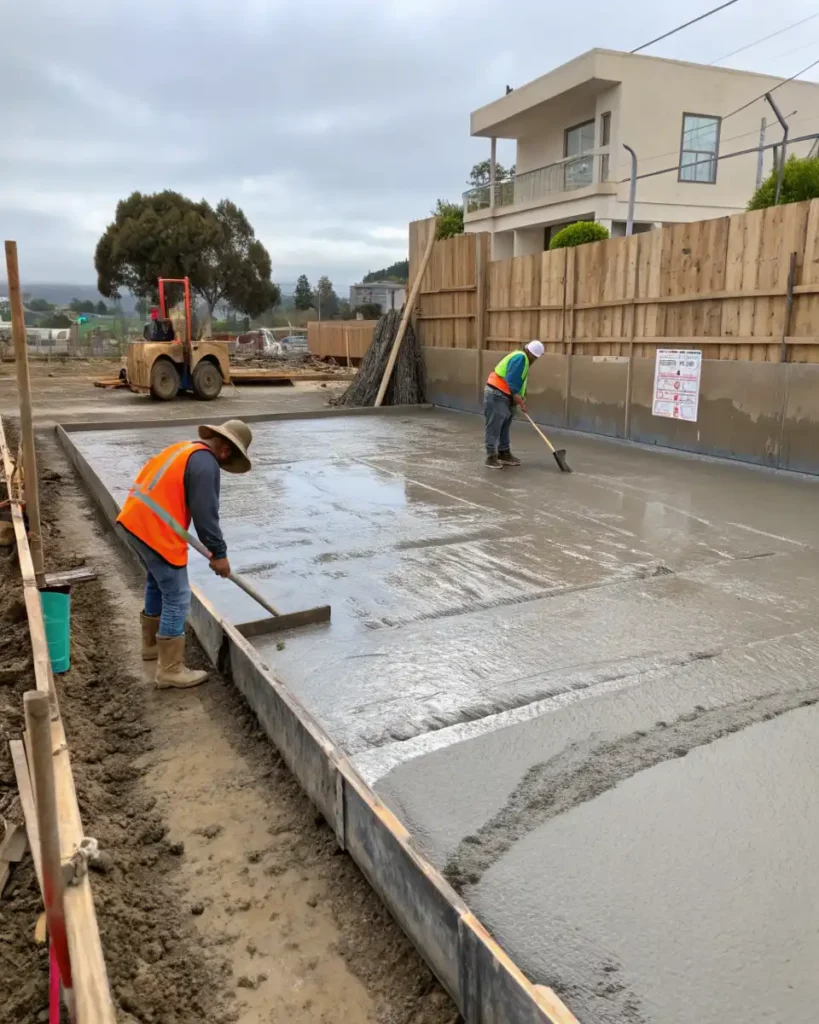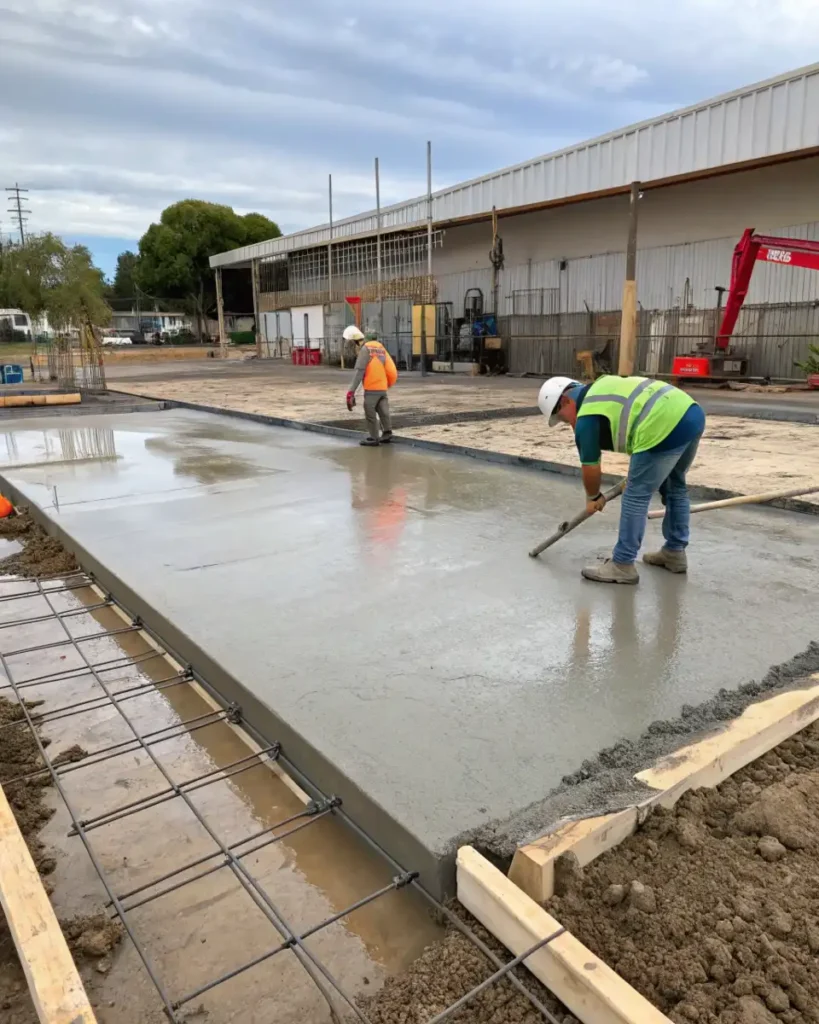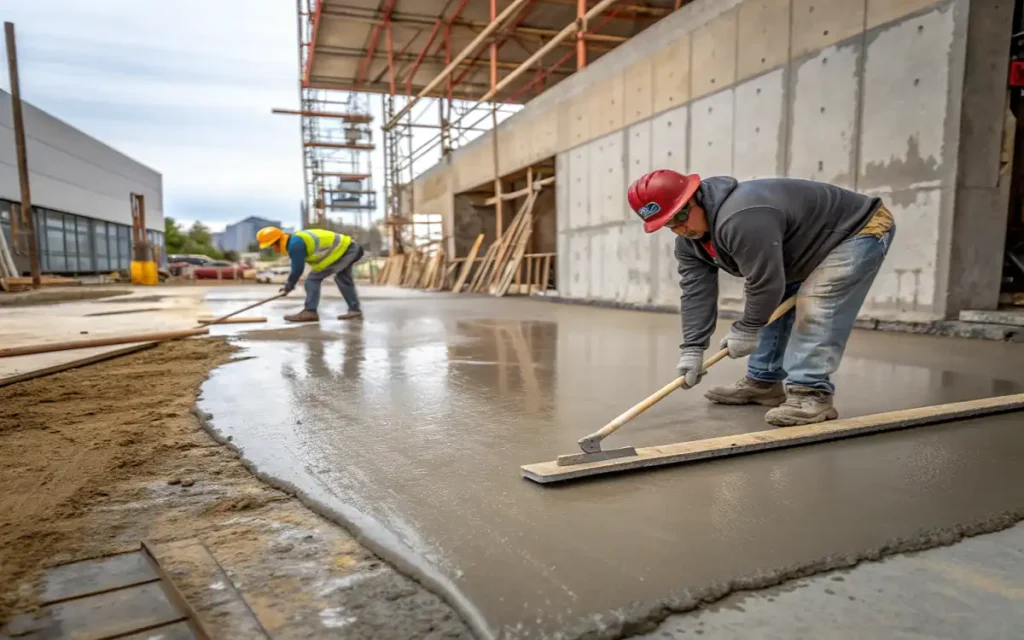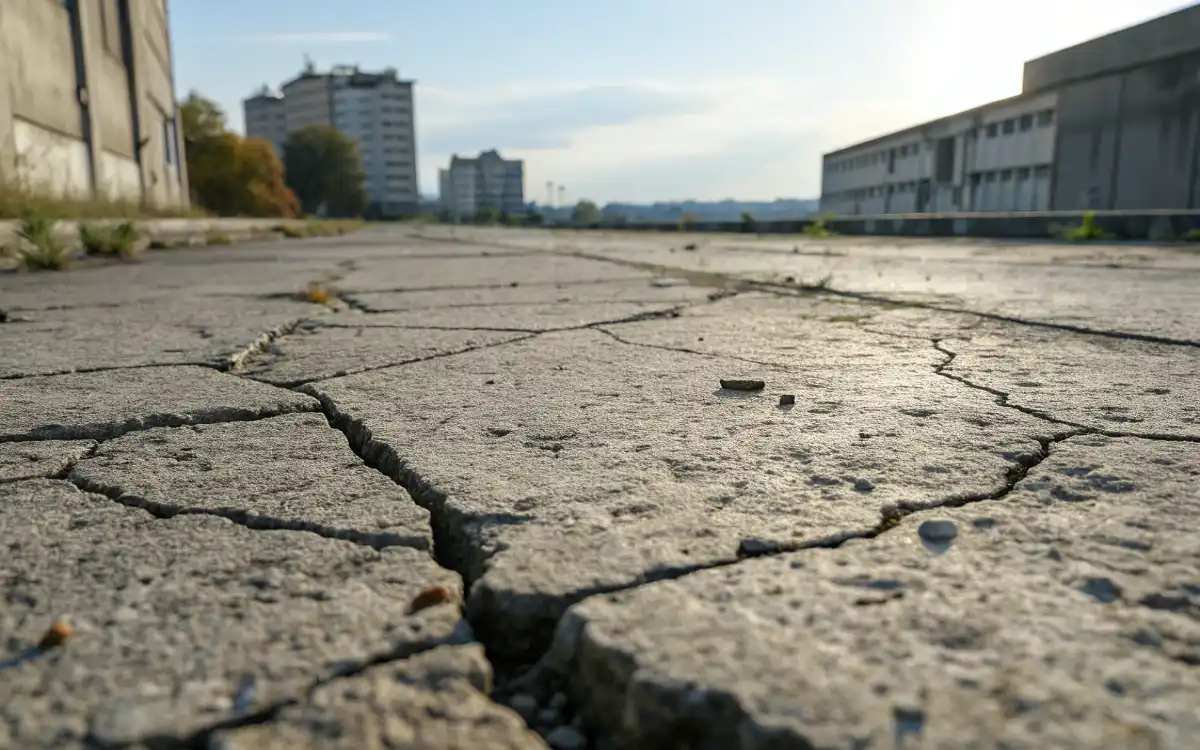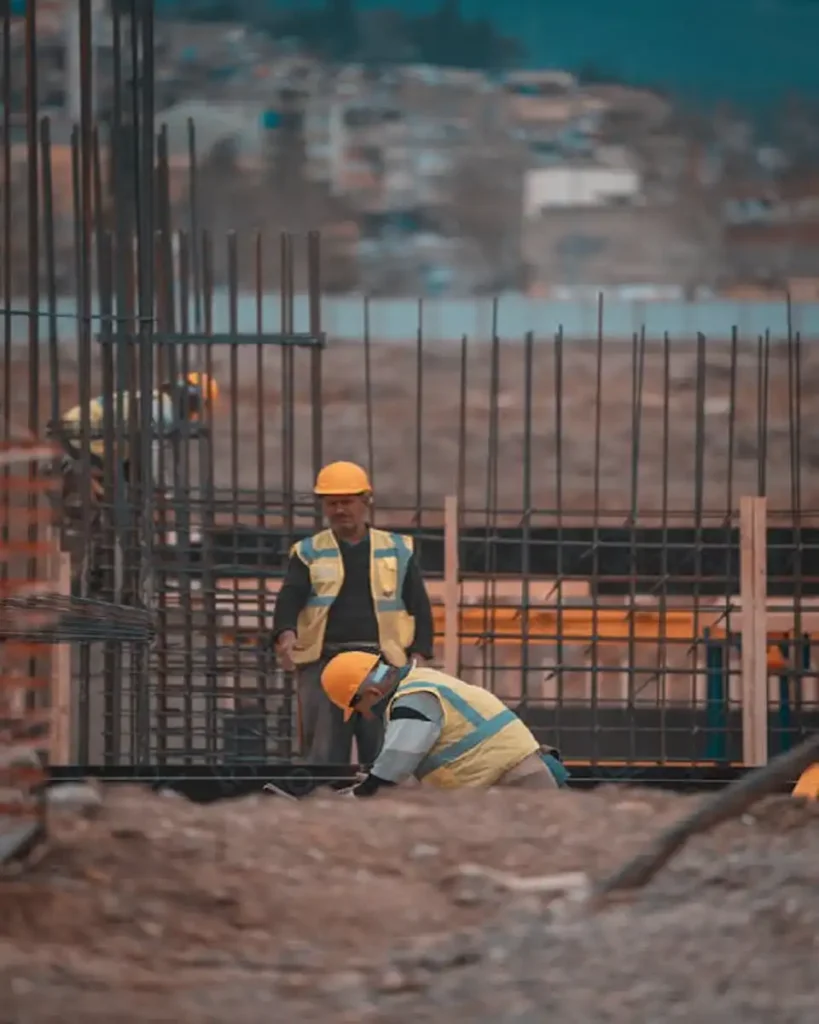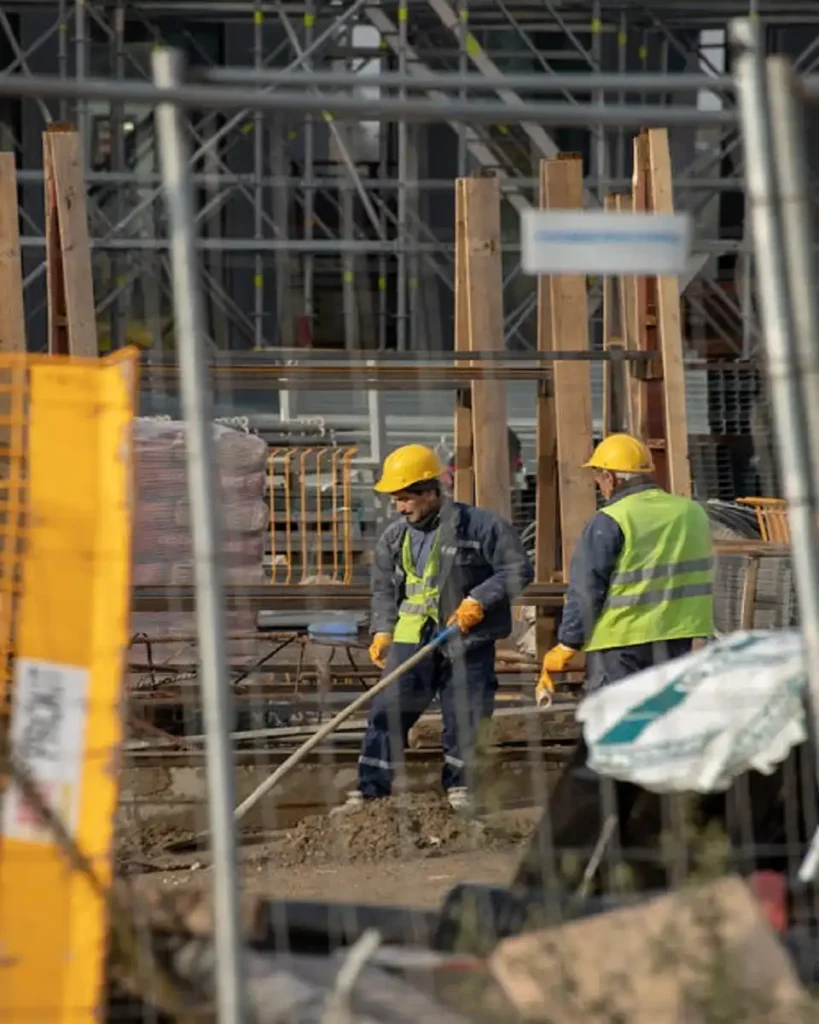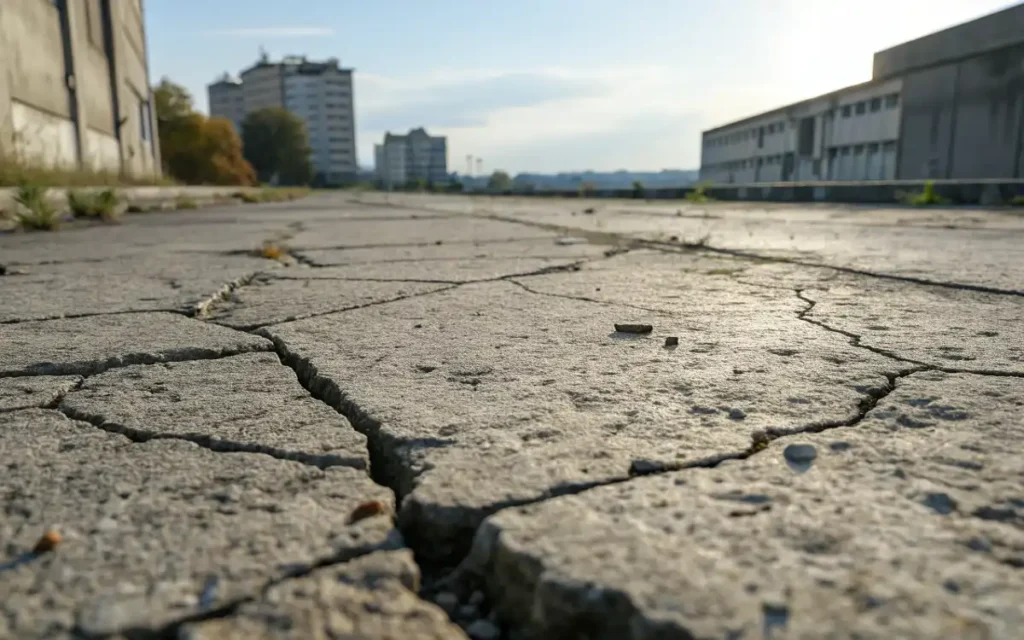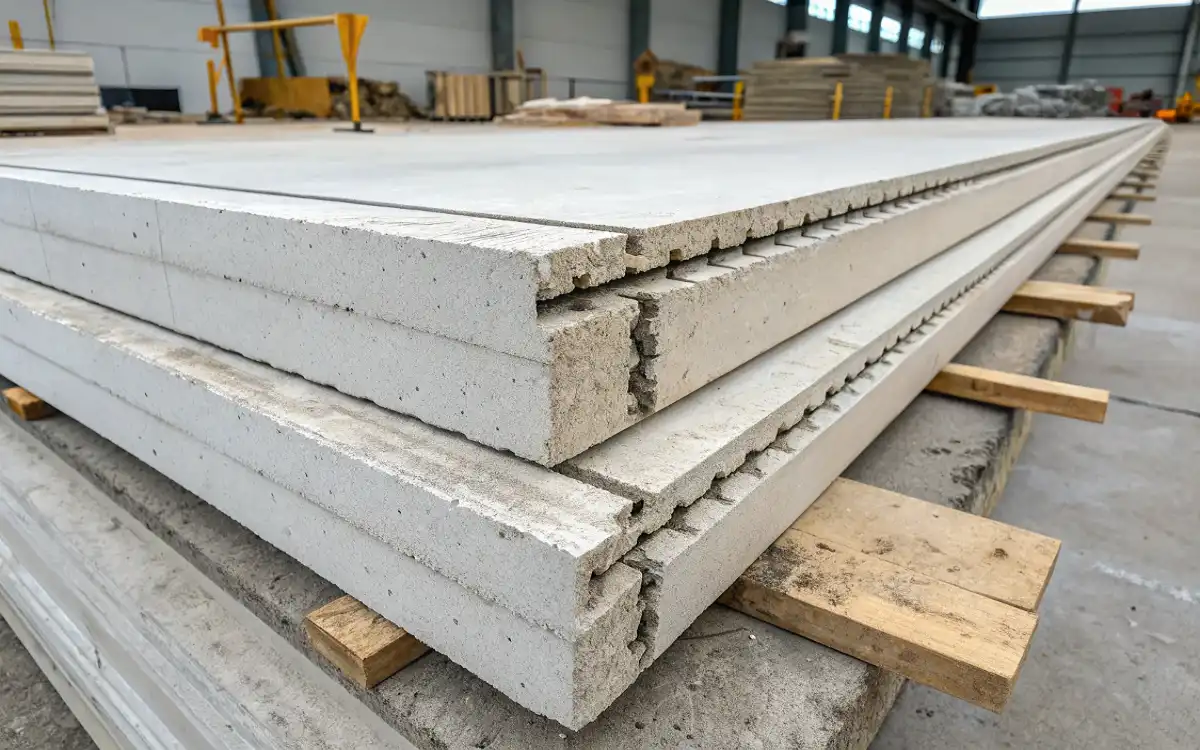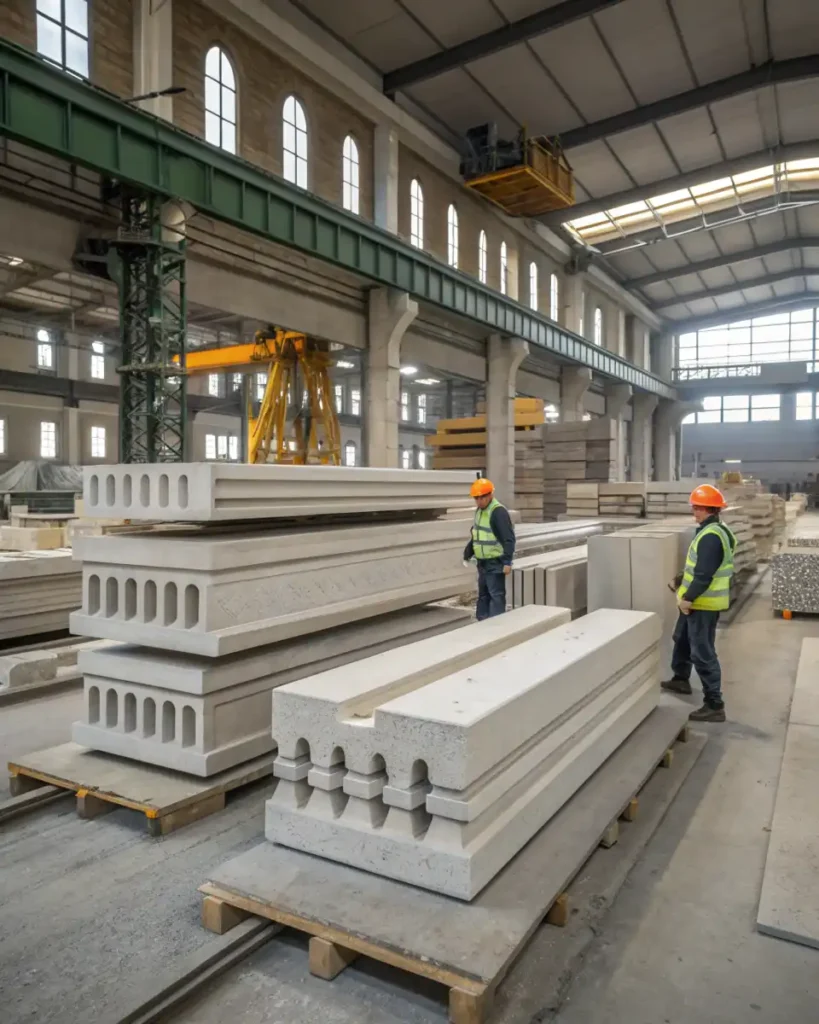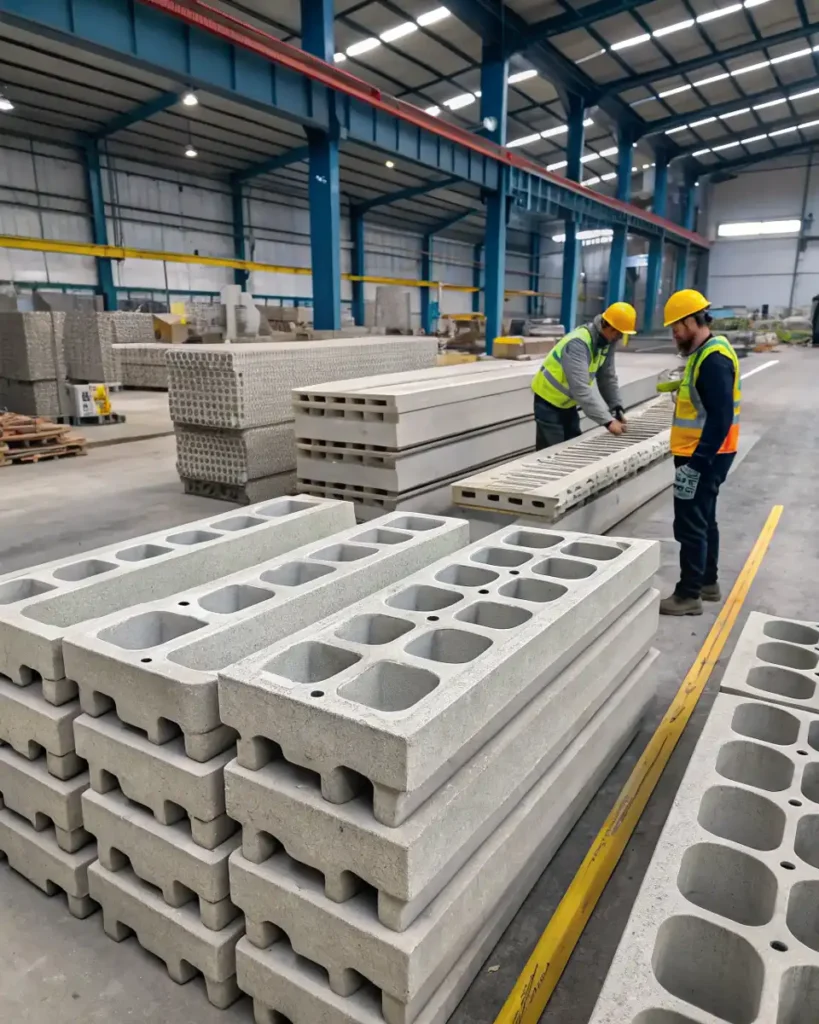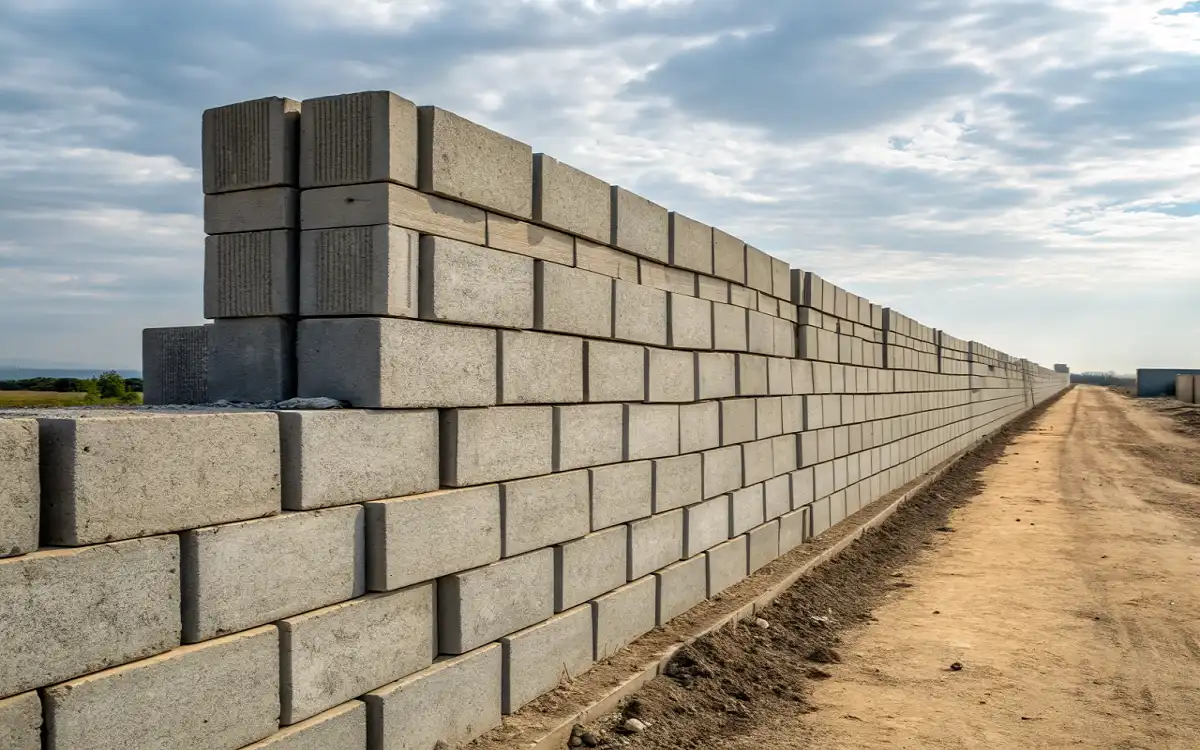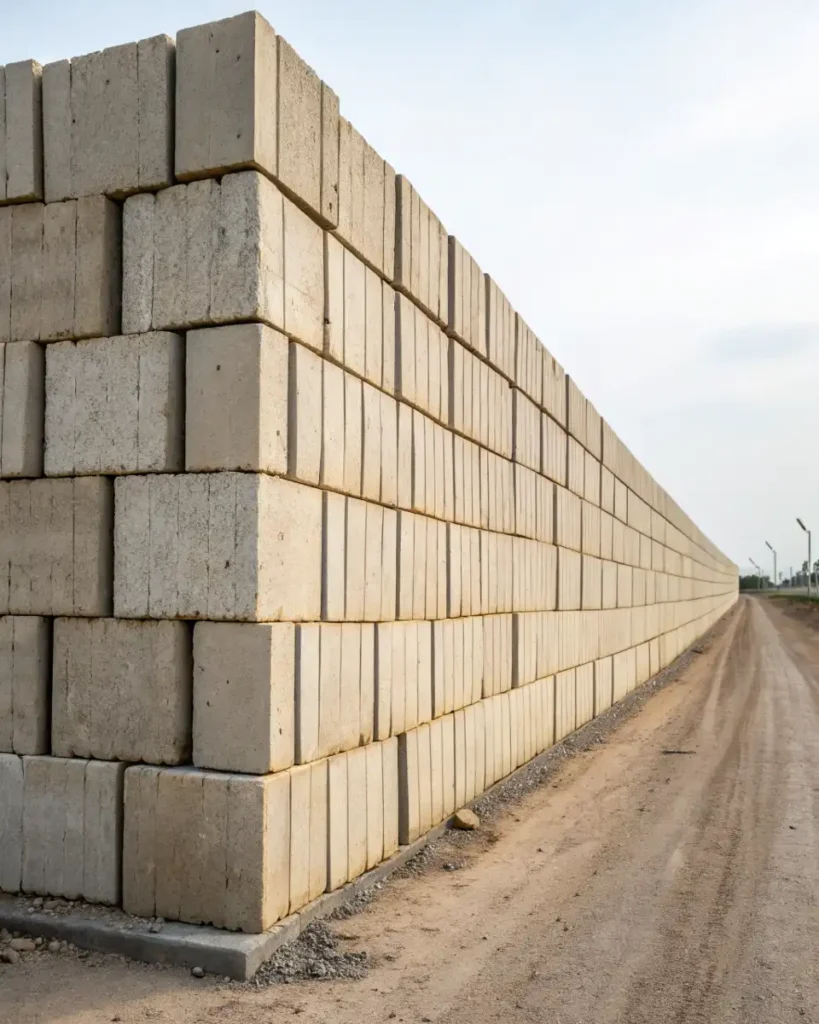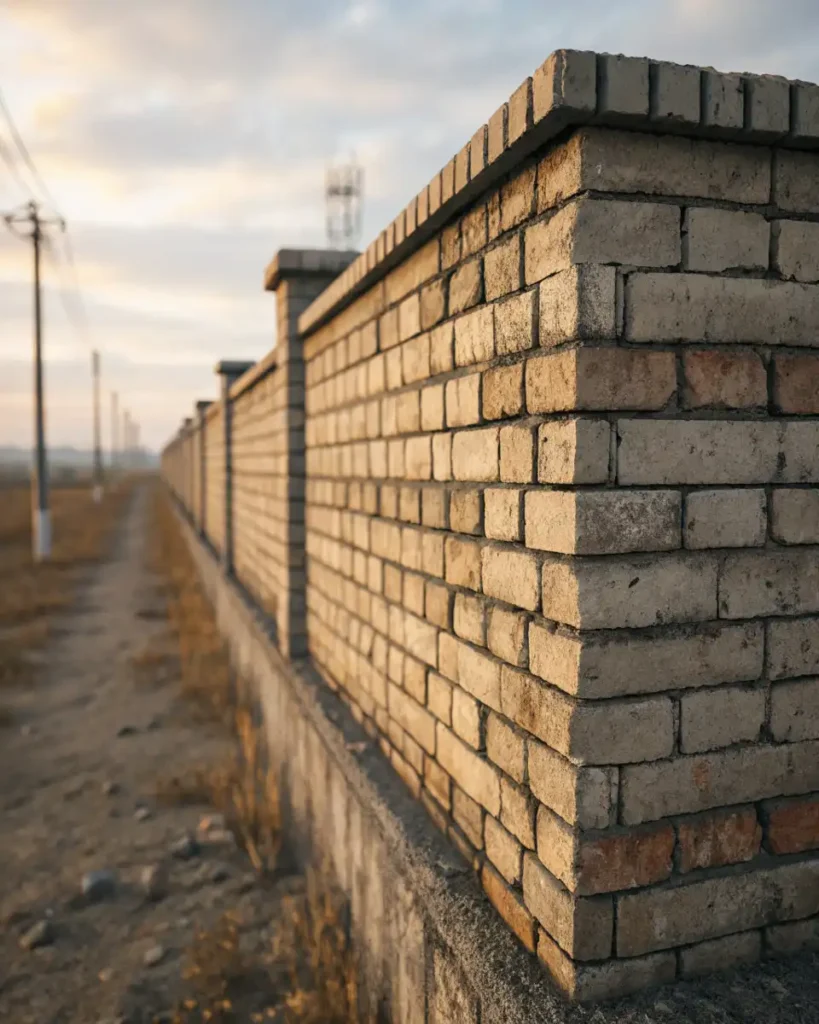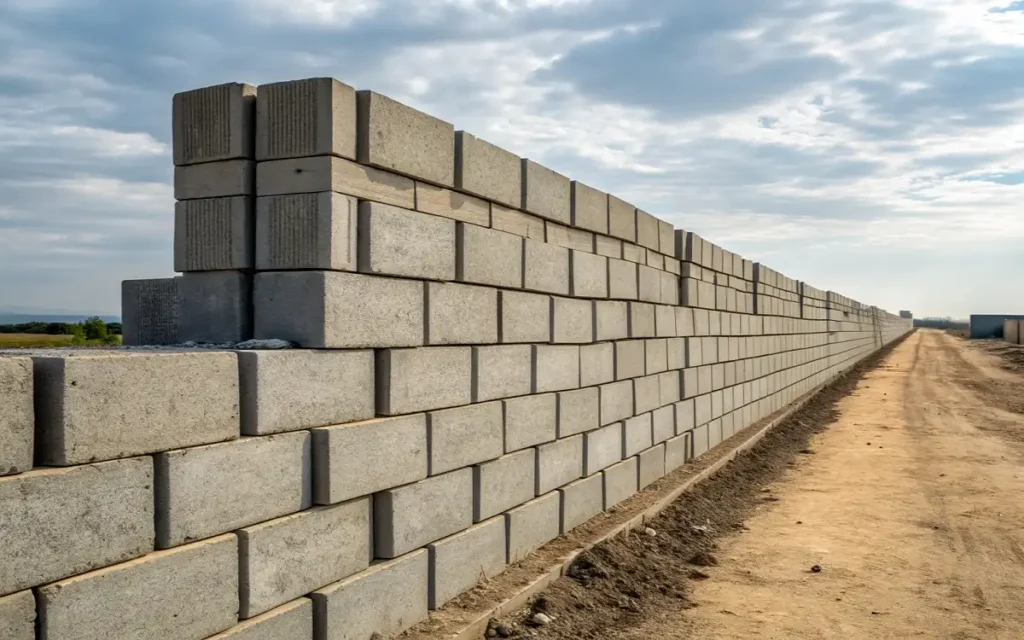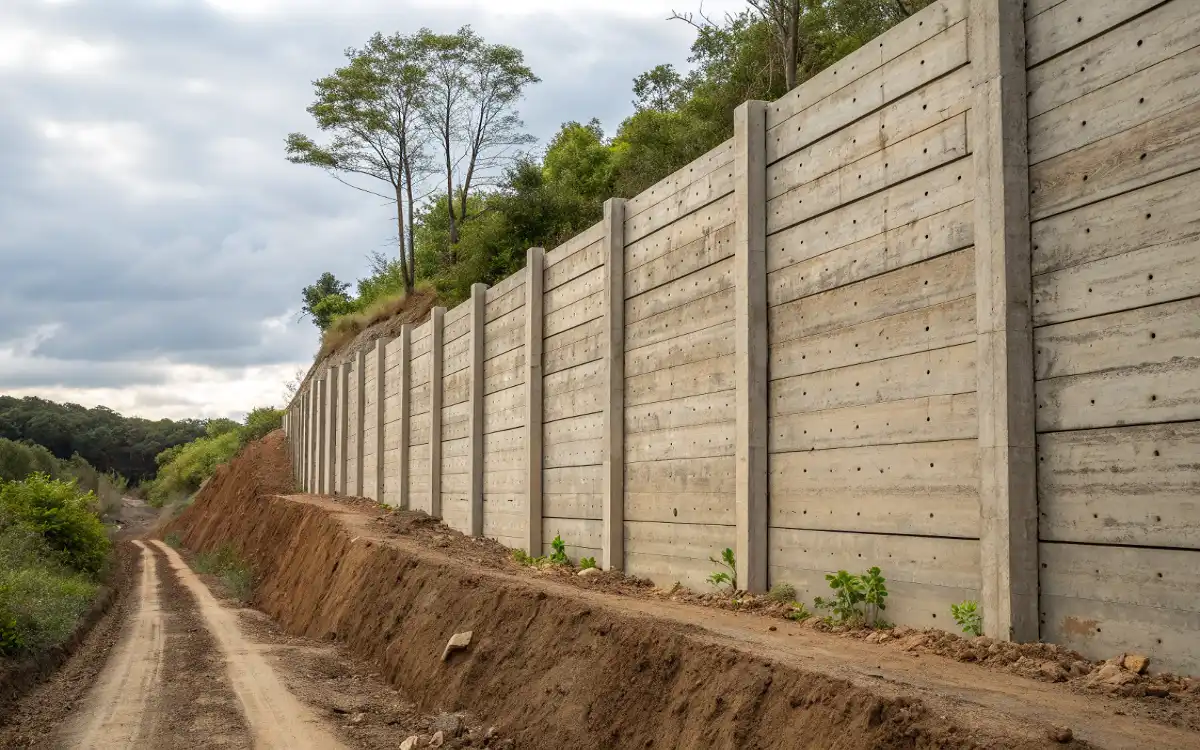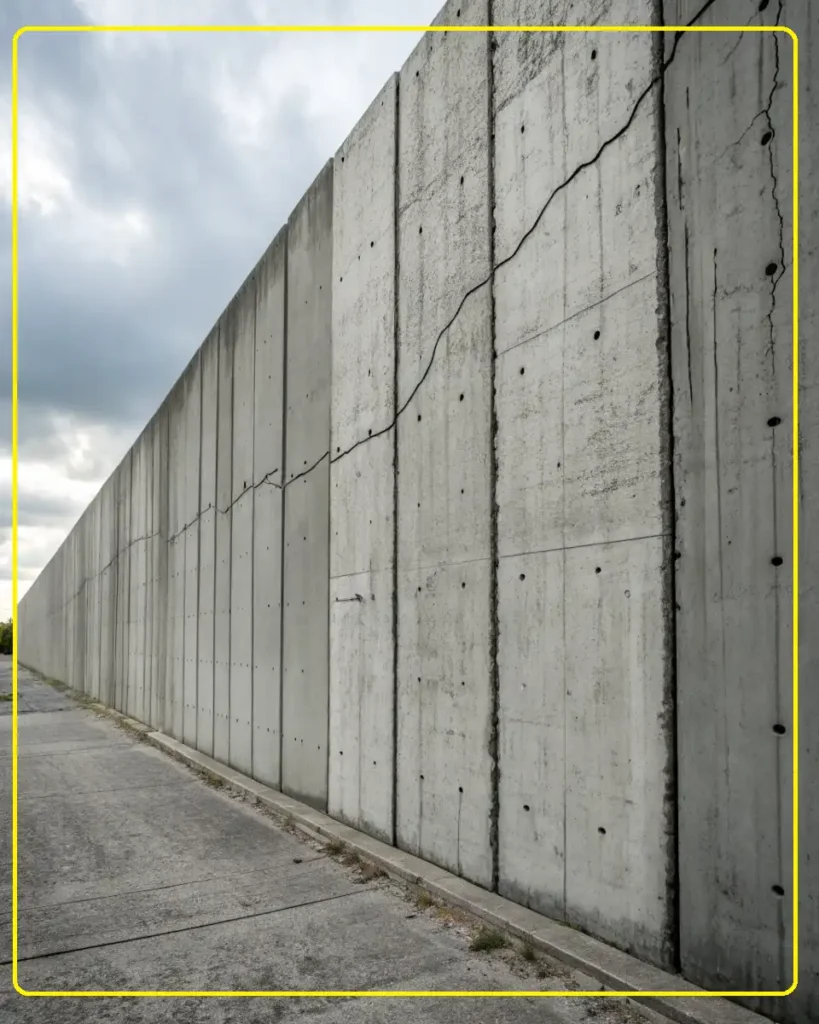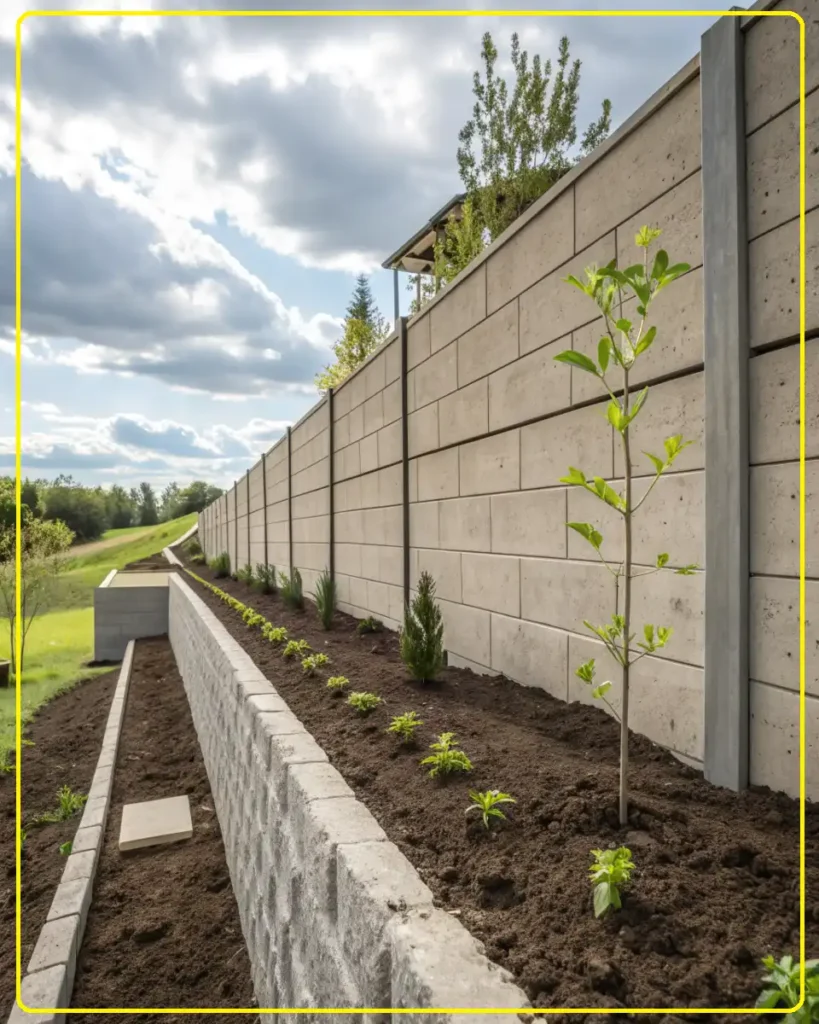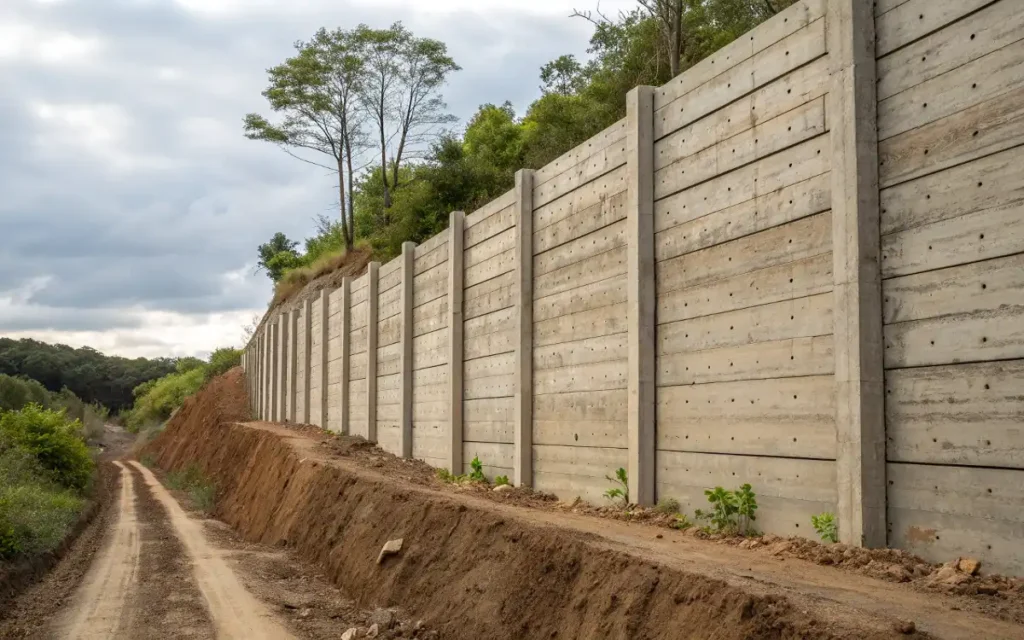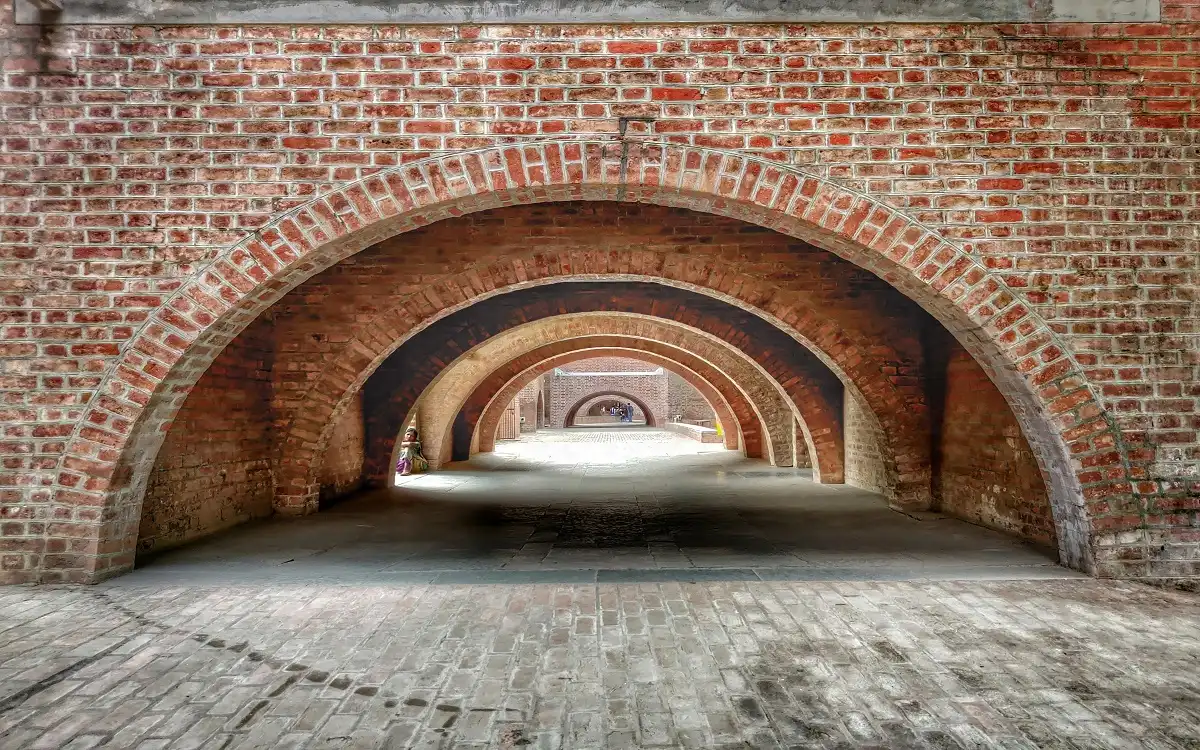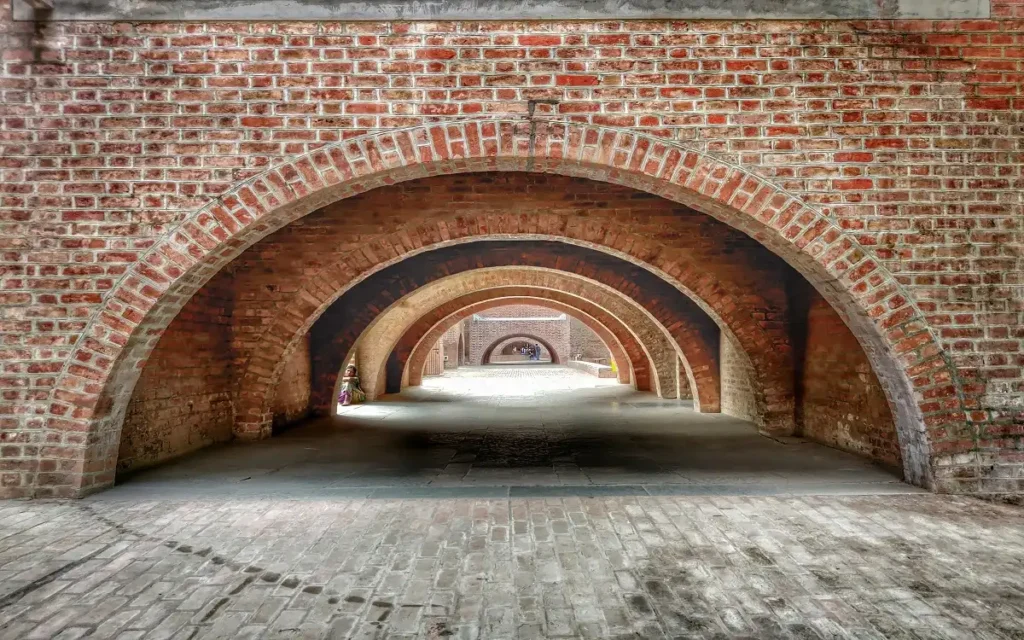Introduction
Safety and dependability are the primary focuses of the construction industry. Concrete masonry and precast concrete construction are the most preferred combination ‘after’ construction because of the trust the value gained in trust over the years.
Technology growth and design creativity are reasons why these materials are main parts in the construction of sustainable, resilient, and enduring buildings and infrastructure. This text focuses on the performance on block wall and linear foot construction in the year 2025.
What is a Concrete Masonry Unit?
Concrete masonry unit construction or CMUs are precast concrete blocks construction of cement, aggregates, and water then shape and form the blocks, and modules in various dimensions and structural designs.
The design of CMU offers flexibility to be adapted in multiple ways and utilized in the construction of diverse architectural design in walls, partitions, and load-bearing elements.

CMUs in Modern Construction
For a long time, concrete masonry unit block CMUs sustained the construction of walls and for a long and constructed many rofices and buildings of all kinds.
Modern CMUs for construction have been designed for flexible construction and in that tech progressive advancements have been designed and setted for construction to make that construction and design possible and developed.
Precast Concrete: Technology and Trends in 2025
For construction and module construction then set construction it reduces the cost and time of construction considerably. It also helps to avoid time lost in the construction and placing of nails and slab construction.
Looking Ahead to 2025
- More Sustainable Practices: Precast concrete masonry unit facilities are now using low-carbon construction materials, recycled waste concrete, and waste-reducing practices to achieve green building guidelines.
- Smart Manufacturing: The use of building information modelling (BIM), digital twins, and IoT sensors for real-time quality control and predictive maintenance contribute to faster construction workflows.
- Design Innovation: 3D printing, custom finishes, and modular panel systems provide more options for design.
5 Key Advantages of Precast Concrete and CMU
1. Unmatched Durability
Using CMU in conjunction with precast concrete remarkably improves the durability of a structure.
CMUs are strong and provide resistance to compressive and lateral forces, while the precast method guarantees that quality checks are made on each component before it reaches the construction site.
Structures using this combination can endure harsh climates, seismic events, and heavy loads.
Internal reinforcement extends crack control and stabilizes the structure for the long term.
concrete masonry unit protect CMUs from moisture ingress, fire, and abrasion.
2. Speed and Efficiency
Because precast concrete is produced off-site, it allows other construction activities to take place at the same time. CMUs are produced in standard sizes, which improves on-site assembly and reduces the amount of time and manpower needed.
On-time deliveries mitigate the risks that come with material scarcity, bad weather, and other delays.
Efficient off-site construction allows for just-in-time scheduling, which reduces overall construction costs and improves the bottom line.
3. Sustainability and Eco-Friendliness
New precast plants recycle water as well as old concrete forms and aggregates. This helps in conserving resources. A lot of CMUs now use recycled stuff or have low carbon substitutes which helps lessen their environmental impact.
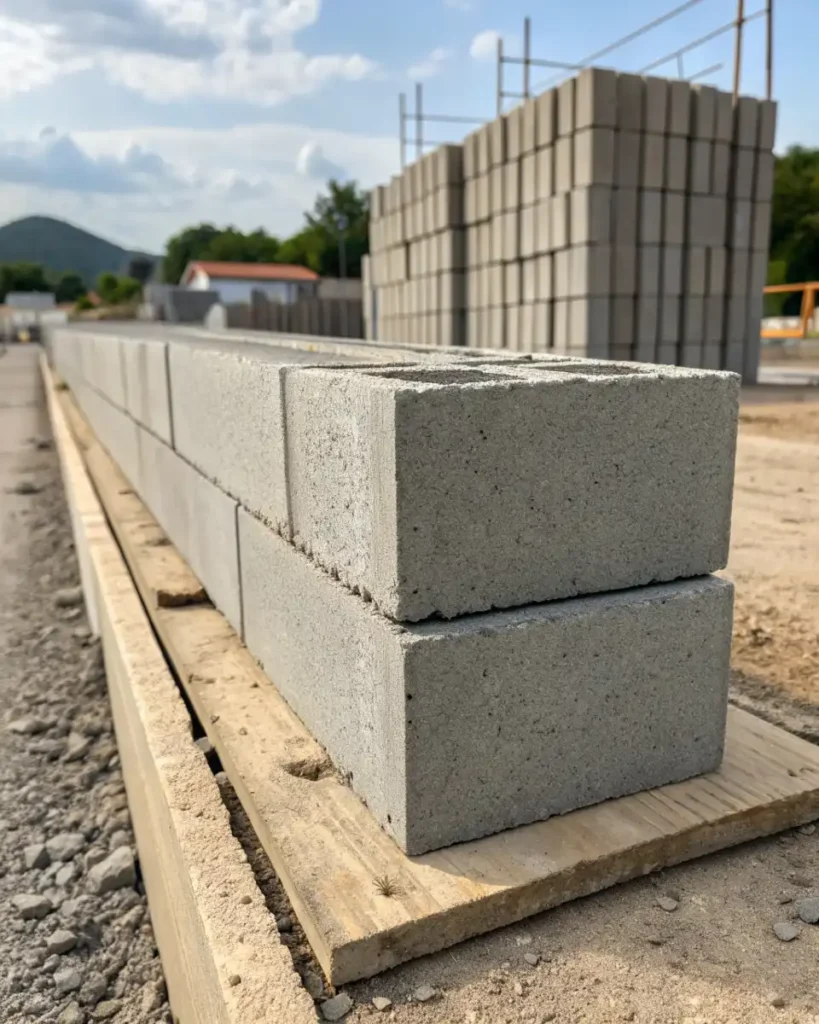
The energy performance of CMU and precast walls is great as they reduce heating and cooling needs.
When CMUs and concrete masonry unit products are sourced sustainably, the projects gain LEED certification or similar awards.
4. Outstanding Insulation and Comfort
New insulated wall panels which are the combination of CMUs and precast concrete have now been designed. To improve energy efficiency, they provide a continuous thermal break.
These assemblies diminsh the passing of noise, provide and output fire-resistant barriers which is essential for a modern living and commercial environment.
The continuous insulation is a thermal closing which significantly reduces the heating and cooling costs.
The CMUs and precast walls are thick which add to the sound absorption. This is valuable in making the modern interiors of offices, hotels and homes quieter.
5. Adaptability and Design Flexibility
CMU modular use in the precast systems is a great tool in helping the architects. This helps in the design of personalized block walls which comply with both the functional and the spatial design.
For the different finishing options (polished, exposed aggregate, and varying colors or patterns) builders can match with the design of the brand or region.
The use of custom patterns is limitless with fake stone, brick, patterns and other designed textures.
Modular construction allows for designed expansions and renovated using standard components.
Concrete Masonry Unit Applications and Techniques
Linear Foot Cost and Efficiency
When estimating costs for CMUs and concrete masonry unit projects, linear foot cost is also takes cost estimating into consideration. Additionally, for CMUs and precast concrete, cost per foot quickly lowers as scale manufacturing and installation becomes less time consuming.
Site Planning and Concrete Forms
To minimize errors and site waste, designers of precast facilities use adaptable concrete forms for each panel or CMU ensuring exact standards of shape, finish, and structural integrity. This also improves site waste.
Role of Block Walls
CMUs and precast block walls perform numerous functions and can be used as foundation walls in residential buildings or security walls for commercial properties. Their modularity allows for easy repairs and upgrades, making the building last longer.
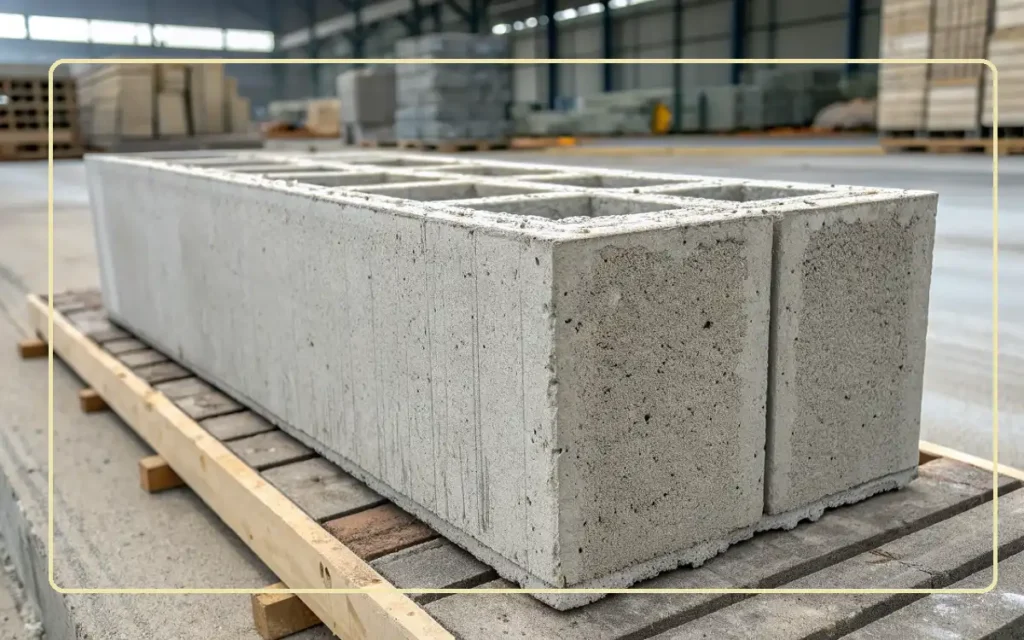
Benefits Comparison Concrete Masonry Unit
| Benefit | CMU Only | Precast Concrete Only | Combined System |
| Durability | High | Very High | Maximal |
| Installation Speed | Quick | Faster | Fastest |
| Sustainability | Improved | High | Best |
| Insulation | Good | Very Good | Excellent |
| Design Flexibility | Moderate | Good | Superior |
Important Considerations for 2025
In 2025, builders must consider reinforced masonry and other new building codes, including energy codes and solid grout below grade.
Using a certified precast contractor will help ensure block walls and precast pieces meet these guidelines and is the newest standard for expected performance.
New Technological Innovations
More advanced systems integrate smart sensors and sophisticated advanced tracking systems into both precast and CMU installations.
This progression is essential for structures such as hospitals, data centres, and public safety buildings that need real-time performance tracking and predictive maintenance.
Clayton Concrete and Prestressed Concrete
Prestressed precast elements have steel cables or rods that are tensioned encased and bonded in concrete and this concrete increases the load-bearing capacity for large commercial or industrial structures.
High-performance forms for complex projects are consistently delivered and designed by suppliers like Clayton Concrete.
Final Thoughts
In modern construction, the value and flexibility of advanced Concrete Masonry Units and precast concrete systems combined cannot be overemphasized.
Projects with tight timelines and high performance demands, especially in 2025 and the years that will follow, will need systems for construction that are durable, efficient, and adaptable.
The value of smart manufacturing systems, eco-friendly systems, and advanced technologies for real-time tracking in construction systems continues to shape resilient concrete block walls and eco-friendly systems for the construction of innovative foundations and advanced technologies of 2025.
For Repair and Services
1924 W Edward Ln, Milwaukee, WI 53209, United States
Phone: +14142855933
Email: [email protected]
